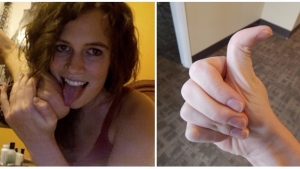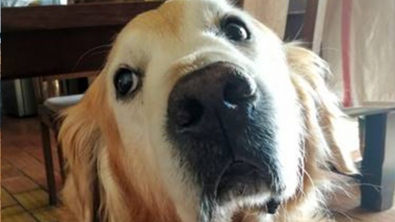11 signs that prove you have a unique body
Every person is unique, that’s a fact. Whether it’s their personality, physical feautures, or feelings, no one is exactly like anyone else. Some people also possess unique abilities, done by their own bodies, while others are actually born with a characteristic all their own.

Here are some of these rather rare skills and physical traits that only make us more unique. And there’s a little bonus at the end of the article!
11. A flexible tongue

Although everyone has a tongue, you have to realize that they are different from one individual to another. In fact, the length, width, how muscular it is, etc., is different for every one of us. According to several cases, Indians have a more toned and flexible tongue than the rest of us. A study done on the tongue showed that 63% of all people were able to fold their tongue in a roll. 14% are able to bend it in half, and only 1% can make a wave with their tongue.
10. Ability to wiggle ears

Did you know that only 22% of people can move one ear? And only 18% of the population can move both of them! It seems that this is a "lost skill," because our ancestors were pretty talented with their ears! Why? Simply because the body has evolved: before, the jaw muscle connected to the ears was used much more. But with the evolution of our food and the way we eat, communicate, etc., we aren’t as skilled with these muscles, because they’re used a lot less.
9. Ability to wiggle individual toes

Controling each individual toe is impossible. The truth is that only the big toe and pinky toe have independent muscles, while the others are all attached to the same muscle group. Have you ever tried to wiggle each toe? Can you do it? If you’ve tried it, you’ve seen that it can’t be done!
One study showed that people who can do it really appreciate their freedom and hate the thought of being tied down. Because of this, the study advises against marrying someone who can wiggle their pinky toe!
8. Touching your elbow with your tongue

It is believed that no more than 1% of people in the world can touch their elbow with their tongue. It’s all a matter of lengths: if your arm is short and your tongue is longue, you have a better chance of doing it. In addition, if you’re flexible, you may also be more likely to do it. But even with these features, most people still can’t do it. If you’re among the 1%, you’re more unique than you may have realized!
7. A gap between the teeth

Scientifically called "diastema," only about 20% of the population has a gap between the front teeth! According to dentists, this is an aesthetic dental defect, which is easy to fix with a dental appliance. But some people are proud of their teeth, like Vanessa Paradis and David Letterman, who think it adds uniqueness to their image.
6. Raising only one eyebrow

Our face is made up of many muscles. Being able to control them is quite a challenge. Knowing how to raise only one eyebrow, for example, shows that you have gained some control over your facial muscles. Most of the time, it is not unusual to know how to raise eyebrow and be able to move one’s ears too. Some scientists believe this was easy to do before, because monkeys use this signal to deal with danger.
5. Dimples

Dimples were a very desirable physical feature in the last century. Women who didn’t have them even tried to get them by torturing themselves with tools. Only 25% of the world's population has dimples today. It should be noted that dimples are a result of a structural defect of the zygomatic muscle. The cheeks are plumper and dimples are visible.
4. A hole above the ears

You’ve never seen this before? There’s a reason: only 5% of people on the planet have this little hole near the ear. Strangely, the United States has only 1% of cases, compared to 10% in Asia. There are no scientific theories that explain this characteristic, nor the role it may have on the human body. People who believe that humans descended from fish think that these orifices are remnants of gills.
3. A hitchhiker’s thumb

Hitchhiker’s thumb is a physiological phenomenon in which the upper phalanx of the thumb can bend 90 degrees in the direction opposite to the palm. This hyperextensibility is caused by the presence of a special gene, known as the "bendy thumb gene." Such a feature is inherited and occurs in about 25% of people.
2. Missing tendon in the forearm

In order to check if you have all the tendons of your arm, gather all the fingers of one hand together, and touch your thumb and index finger. You should see a tendon on the inner side of the wrist. If it doesn’t become visible, you must be one of the 14% of people who don’t have the long palmar muscle. It has disappeared as the human body has evolved over time. Experts say that the absence of the long palmar muscle does not affect the grip strength or any other functions assigned to the hands.
1. Darwin’s tubercle

This is a small protrusion on the inside or outside of the ear. Revealed by the scientist himself, he claimed that it was only a remnant of our ancestors’ pointy ears. No more than 10% of the population has this characteristic, and according to scientists, these people have better hearing.

By Straker Julia
Writer
Passionate about writing, I write articles on the subjects that I love. Creativity and Animals themes are my favorites!


